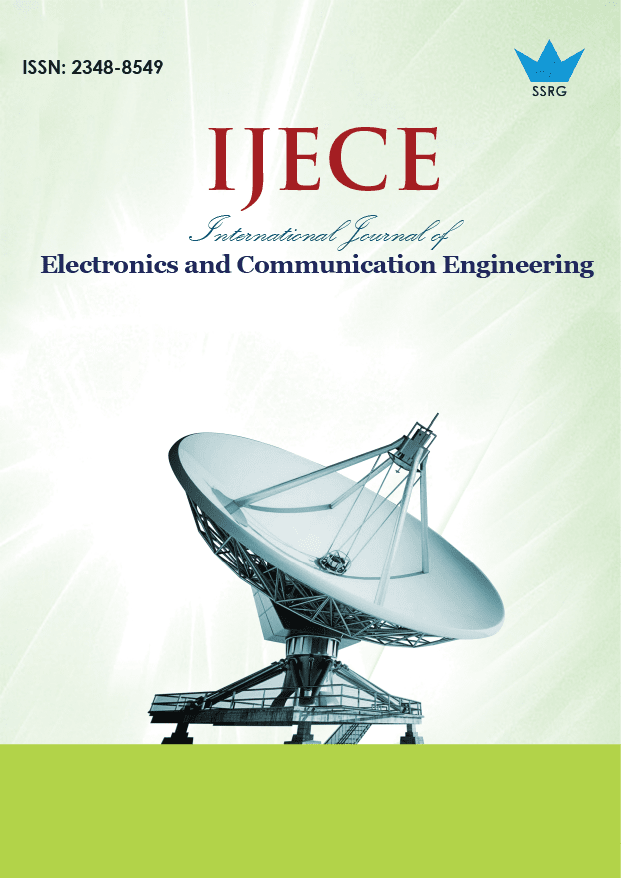Exponential Spider Wasp-Optimized Deep Learning Model for Type-2 Diabetes Detection Using Gene Expression Data

| International Journal of Electronics and Communication Engineering |
| © 2025 by SSRG - IJECE Journal |
| Volume 12 Issue 6 |
| Year of Publication : 2025 |
| Authors : Chetan Nimba Aher, Madhavi Ranjeet Patil, Neha Ganvir, Sumati Manoj Jagdale |
How to Cite?
Chetan Nimba Aher, Madhavi Ranjeet Patil, Neha Ganvir, Sumati Manoj Jagdale, "Exponential Spider Wasp-Optimized Deep Learning Model for Type-2 Diabetes Detection Using Gene Expression Data," SSRG International Journal of Electronics and Communication Engineering, vol. 12, no. 6, pp. 54-64, 2025. Crossref, https://doi.org/10.14445/23488549/IJECE-V12I6P105
Abstract:
Type-2 Diabetes Mellitus (T2DM) occurs by insulin dysfunction, a chronic disease. Moreover, the human body cannot react with high sugar due to low secretion of insulin, which increases the blood sugar level. Due to the resistance of insulin or its low production, T2DM patients suffer a lot. The existing diagnosis process faces challenges such as low reliance on testing data, limited accessibility and chances for misdiagnosis. A new model, Exponential Spider Wasp Optimization, is introduced to address these issues, enabling the Quantum Dilated Convolutional Neural Network (ESWO_QDCNN) to detect T2DM. Initially, gene expression data is considered input from the gene expression dataset. Afterwards, the data transformation process is performed using Box-Cox transformation. Next, the feature selection process is performed by employing weighted Euclidean distance. Lastly, T2DM detection is attained by utilizing QDCNN, which is tuned using Exponential Spider Wasp optimization (ESWO). Here, the hybrid approach ESWO is developed by utilizing Exponential Weight Moving Average (EWMA) and Spider Wasp Optimizer (SWO). In addition to this, ESWO_QDCNN has achieved 91.524% accuracy, 90.854% sensitivity and 92.290% specificity.
Keywords:
Gene Expression Data, Type2 Diabetes mellitus, Deep learning, Quantum Dilated Convolutional Neural Network, Spider Wasp Optimizer.
References:
[1] Yifang Hu et al., “Identification of the Shared Gene Signatures and Biological Mechanism in Type 2 Diabetes and Pancreatic Cancer,” Frontiers in Endocrinology, vol. 13, pp. 1-15, 2022.
[CrossRef] [Google Scholar] [Publisher Link]
[2] Yingke Yang et al., “Detecting the Critical States of Type 2 Diabetes Mellitus Based on Degree Matrix Network Entropy by Cross-Tissue Analysis,” Entropy, vol. 24, no. 9, 2022.
[CrossRef] [Google Scholar] [Publisher Link]
[3] Jiabin Li et al., “Identification of Type 2 Diabetes Based on a Ten-Gene Biomarker Prediction Model Constructed Using a Support Vector Machine Algorithm,” BioMed Research International, vol. 2022, no. 1, pp. 1-15, 2022.
[CrossRef] [Google Scholar] [Publisher Link]
[4] Karuna Middha, and Apeksha Mittal, “An Effective Feature Selection Method for Type 2 Diabetes Mellitus Detection Using Gene Expression Data,” Intelligent Decision Technologies, vol. 17, no. 3, pp. 595-606, 2023.
[CrossRef] [Google Scholar] [Publisher Link]
[5] Amira M. Elsherbini et al., “Decoding Diabetes Biomarkers and Related Molecular Mechanisms by Using Machine Learning, Text Mining, and Gene Expression Analysis,” International Journal of Environmental Research and Public Health, vol. 19, no. 21, pp. 1-18, 2022.
[CrossRef] [Google Scholar] [Publisher Link]
[6] Md. Kowsher et al., “Prognosis and Treatment Prediction of Type-2 Diabetes Using Deep Neural Network and Machine Learning Classifiers,” 2019 22nd International Conference on Computer and Information Technology, Dhaka, Bangladesh, pp. 1-6, 2019.
[CrossRef] [Google Scholar] [Publisher Link]
[7] Paul Zimmet, K.G.M.M. Alberti, and Jonathan Shaw, “Global and Societal Implications of the Diabetes Epidemic,” Nature, vol. 414, no. 6865, pp. 782-787, 2001.
[CrossRef] [Google Scholar] [Publisher Link]
[8] Md. Maniruzzaman et al., “Statistical Characterization and Classification of Colon Microarray Gene Expression Data Using Multiple Machine Learning Paradigms,” Computer Methods and Programs in Biomedicine, vol. 176, pp. 173-193, 2019.
[CrossRef] [Google Scholar] [Publisher Link]
[9] Muhammad Fazal Ijaz et al., “Hybrid Prediction Model for Type 2 Diabetes and Hypertension Using DBSCAN-Based Outlier Detection, Synthetic Minority Over Sampling Technique (SMOTE), and Random Forest,” Applied Sciences, vol. 8, no. 8, pp. 1-22, 2018.
[CrossRef] [Google Scholar] [Publisher Link]
[10] Mehdi Boroumand, Mo Chen, and Jessica Fridrich, “Deep Residual Network for Steganalysis of Digital Images,” IEEE Transactions on Information Forensics and Security, vol. 14, no. 5, pp. 1181-1193, 2018.
[CrossRef] [Google Scholar] [Publisher Link]
[11] Jorge I. Vélez, Juan C. Correa, and Fernando Marmolejo-Ramos, “A New Approach to the Box–Cox Transformation,” Frontiers in Applied Mathematics and Statistics, vol. 1, pp. 1-10, 2015.
[CrossRef] [Google Scholar] [Publisher Link]
[12] Jan de Leeuw, and Sandra Pruzansky, “A New Computational Method to Fit the Weighted Euclidean Distance Model,” Psychometrika, vol. 43, no. 4, pp. 479-490, 1978.
[CrossRef] [Google Scholar] [Publisher Link]
[13] Yixiong Chen, “Quantum Dilated Convolutional Neural Networks,” IEEE Access, vol. 10, pp. 20240-20246, 2022.
[CrossRef] [Google Scholar] [Publisher Link]
[14] Petar Čisar, and Sanja Maravić Čisar, “Optimization Methods of EWMA Statistics,” Acta Polytechnica Hungarica, vol. 8, no. 5, pp. 73-87, 2011.
[Google Scholar] [Publisher Link]
[15] Jinxue Sui, Zifan Tian, and Zuoxun Wang, “Multiple Strategies Improved Spider Wasp Optimization for Engineering Optimization Problem Solving,” Scientific Reports, vol. 14, no. 1, pp. 1-29, 2024.
[CrossRef] [Google Scholar] [Publisher Link]
[16] Himansu Das et al., “Enhancing Software Fault Prediction through Feature Selection With Spider Wasp Optimization Algorithm,” IEEE Access, vol. 12, pp. 105309-105325, 2024.
[CrossRef] [Google Scholar] [Publisher Link]
[17] J. Pradeep Kandhasamy, and S. Balamurali, “Performance Analysis of Classifier Models to Predict Diabetes Mellitus,” Procedia Computer Science, vol. 47, pp. 45-51, 2015.
[CrossRef] [Google Scholar] [Publisher Link]
[18] Chris Crawford, Gene Expression Dataset, Kaggle. [Online]. Available: https://www.kaggle.com/datasets/crawford/gene-expression
[19] Madhukar G. Andhale, Renu Pathak, and Shirish Kulkarni, “Design of an Efficient Bio Inspired Optimization Model to Determine Optimal Power between Electric Motor and Internal Combustion Engine in Hybrid Electric Vehicles under Various Driving Scenarios,” International Journal of Technology Engineering Arts Mathematics Science, vol. 3, no. 2, pp. 1-11, 2023.
[Google Scholar] [Publisher Link]

 10.14445/23488549/IJECE-V12I6P105
10.14445/23488549/IJECE-V12I6P105